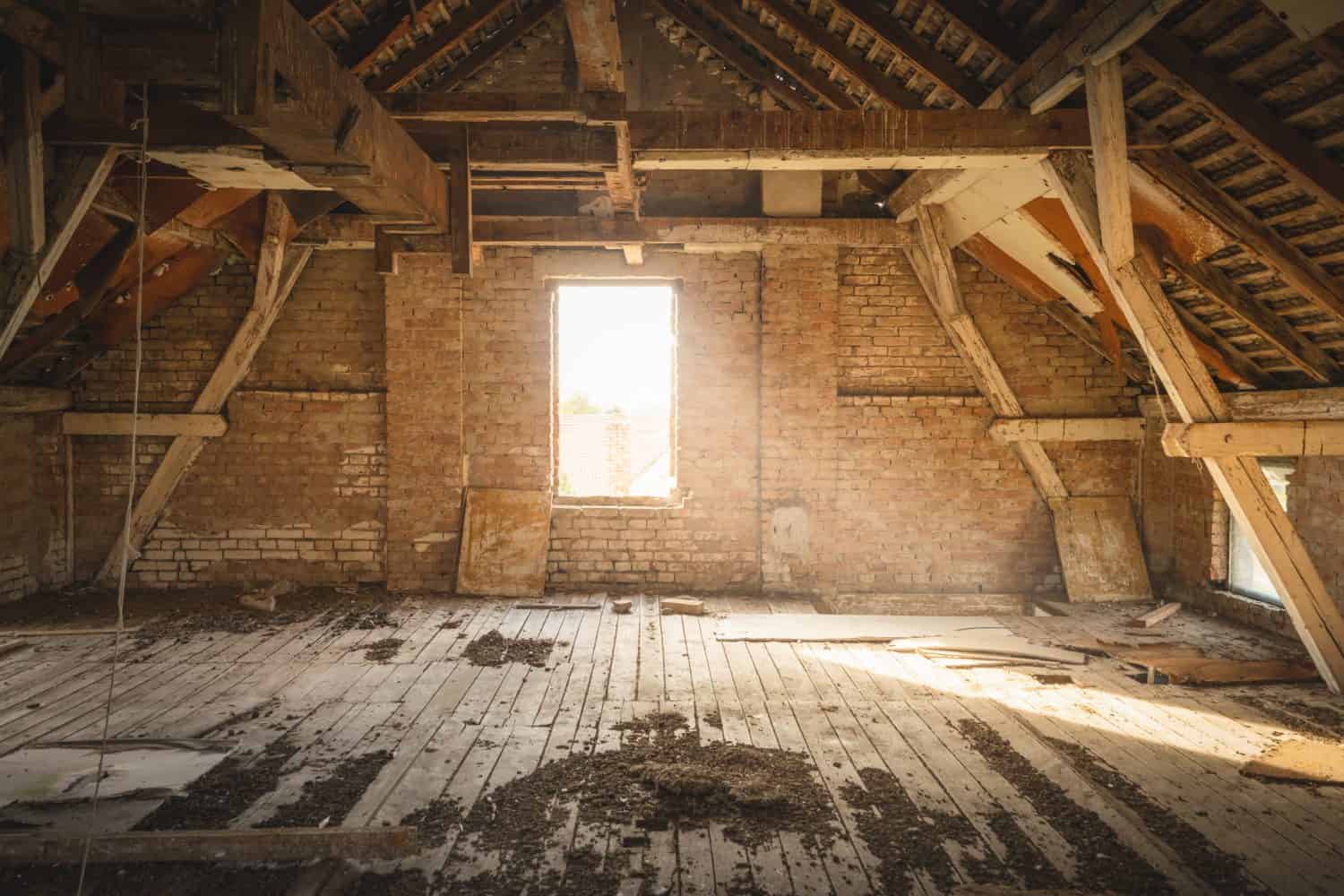Are you hearing strange noises coming from your attic? Some people may think they are living in a haunted house when, in reality, an animal or group of animals has taken up residence in the attic. You may hear scratching, thumping, little footsteps, or even chirps and growls. The noises may only happen at night or only during the day. What could be living in your attic, and how can you get rid of it? Wildlife experts explain there are different signs to look for to help you identify what may be living in your attic. Read on for nine animals that love to live in attics and how you can get them to move out.
1. Squirrels
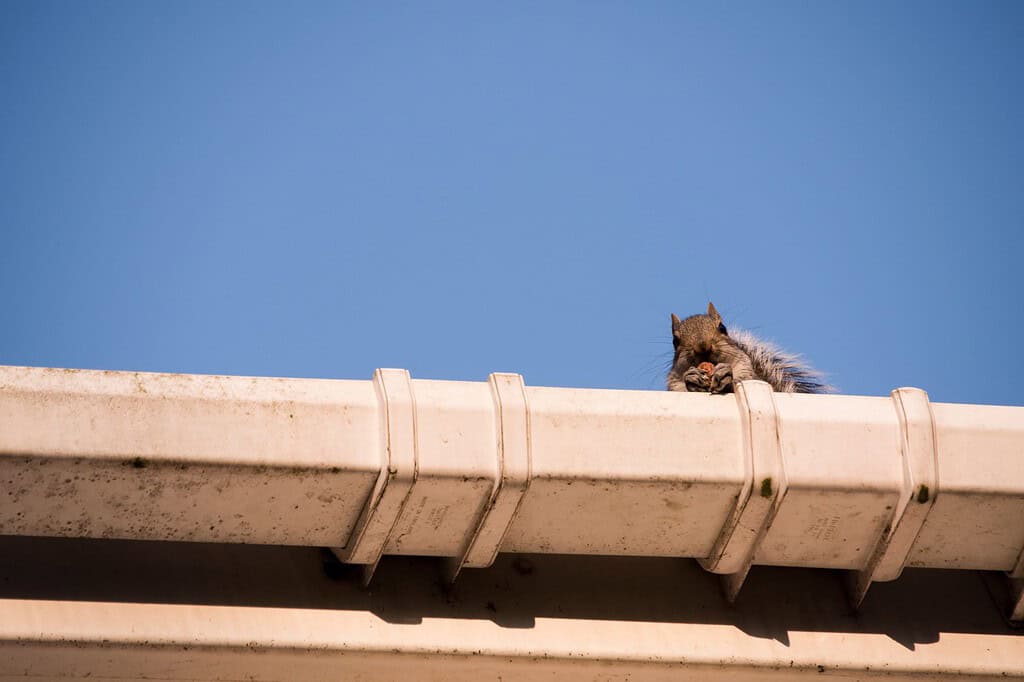
Gray squirrels will find small gaps and openings to seek shelter in a home.
©Ms Deborah Waters/Shutterstock.com
Squirrels are the most common animal found living in attics. Unfortunately, squirrels can cause a lot of damage. The types of squirrels that love to live in attics include gray squirrels, red squirrels, and flying squirrels.
Signs of squirrel activity in your attic:
- Active during the day, quiet at night.
- Scratching, thumping, and chewing noises.
- The pitter-patter of little footsteps.
- Chittering and the occasional sounds of acorns rolling across the floorboards.
2. Raccoons
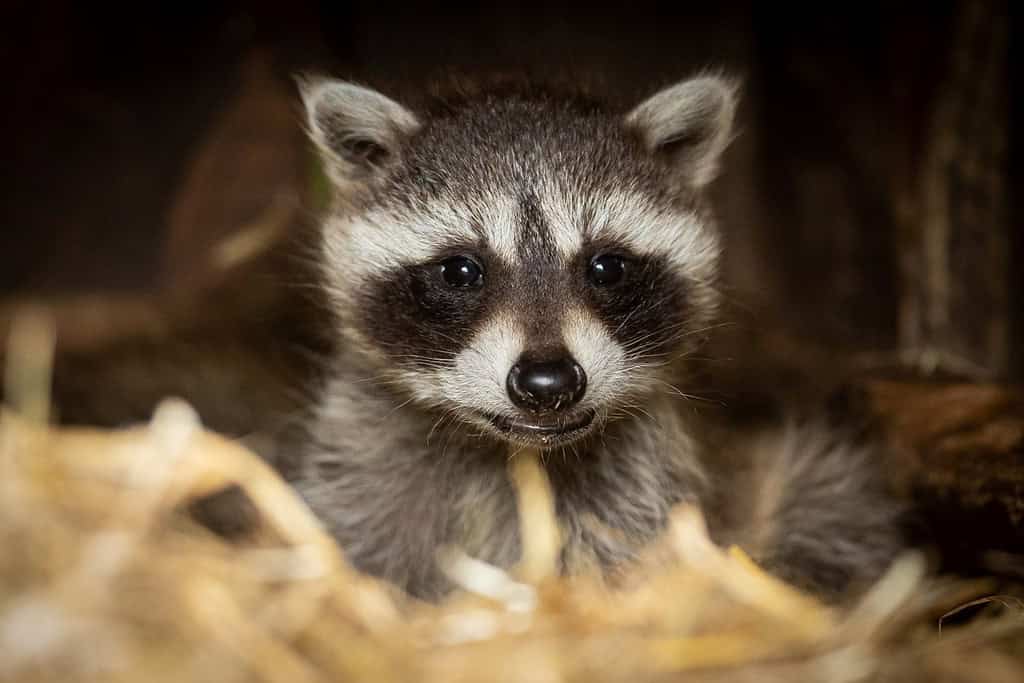
Baby raccoons will make a lot of noise while living in your attic.
©AB Photographie/Shutterstock.com
After squirrels, raccoons are the next common animal to invade an attic. They are most likely to enter an attic during spring when females are looking for a safe place to nest and raise their babies. Raccoons are large animals and can create havoc in your attic space, including gnawing on insulation, leaving large droppings, and even tearing apart walls and roofing.
Signs of raccoons living in your attic:
- Active at night.
- Thumping, scurrying, and gnawing sounds.
- Kitten-like mewing may be heard by very young babies.
- Growling, snarling, and thumping may be heard as the babies grow older and the family of juvenile raccoons begins wrestling with each other.
3. Birds
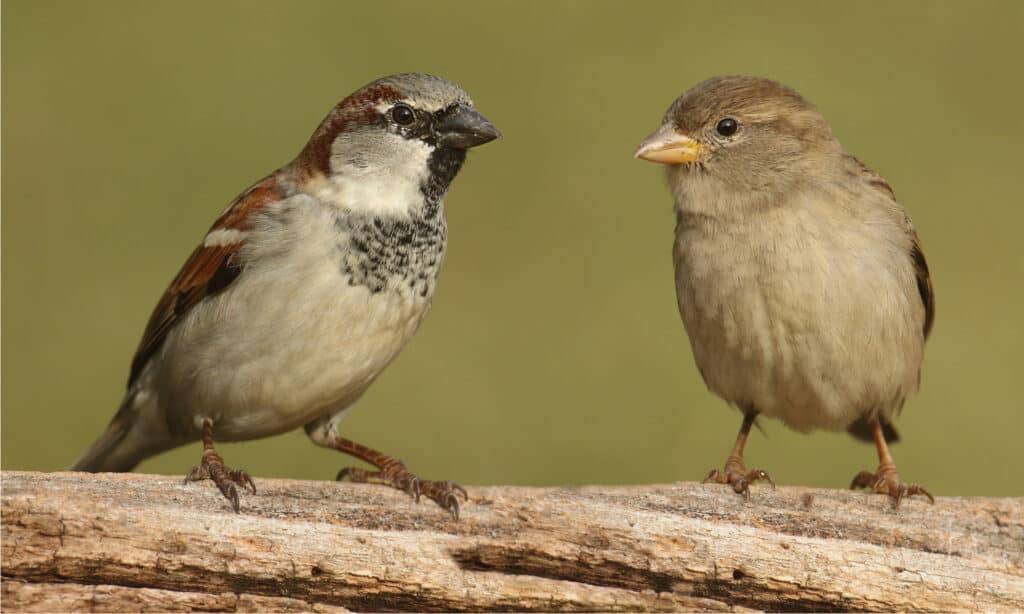
House sparrows may seek warm and dry shelters, such as attics, to make their nests.
©Steve Byland/Shutterstock.com
Birds may come into attics looking for shelter and a safe place during nesting season. They will make a considerable amount of noise and cause a lot of damage. Bird droppings and shredded insulation are just some of the problems you will face with a bird infestation in your attic. Not to mention, bird droppings and feathers can carry harmful diseases such as psittacosis.
Signs of birds living in your attic:
- Most active in the early morning and evening.
- Noises from scratching, shuffling, fluttering, and wings flapping.
- Chirping, coos, or bird songs.
4. Snakes
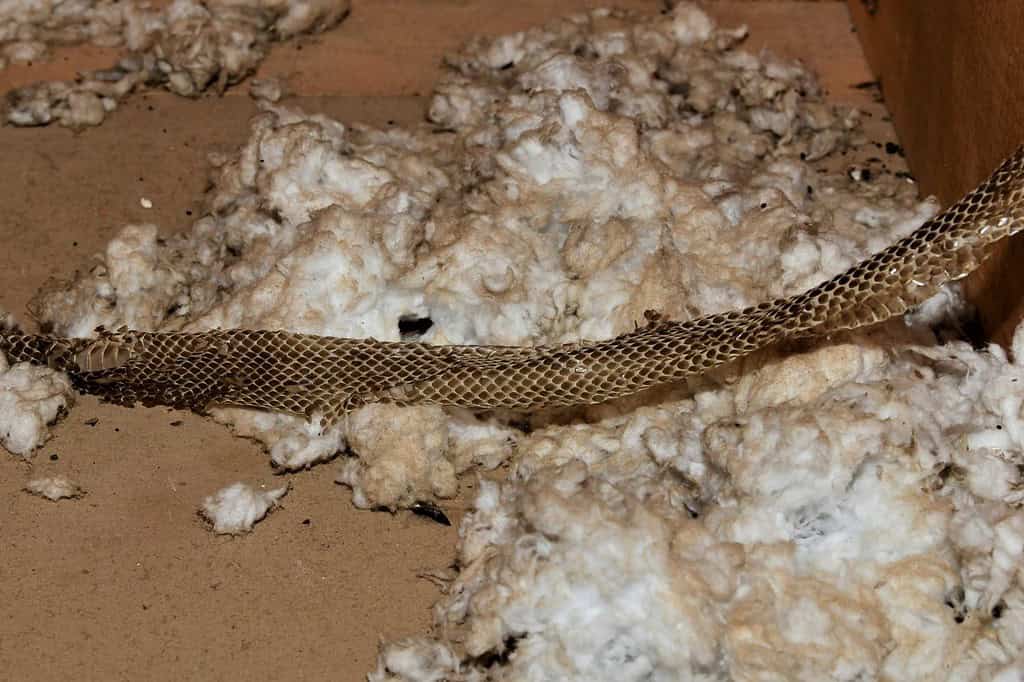
Spotting shedded snake skins is a sure sign you have snakes living in your attic.
©Lara Makela/Shutterstock.com
Attics may provide a warm and dry shelter for cold-blooded animals, such as snakes, that need to regulate their body temperature. Snakes can find holes and other small openings to slither into your home. If you’re also struggling with a rodent infestation, the snakes will have plenty of mice to eat.
Signs of snakes living in your attic:
- May be active during the day or the night, depending on the species.
- Soft, slow-moving, slithering-type, noises.
- You may find shedded snake skin.
5. Bats

Bats can be noisy in an attic, especially at dusk and dawn.
©Hermann Moller/Shutterstock.com
When bats take up residence in an attic, they tend to come and go at dawn and dusk. Breathing in spores found in bat droppings can carry the infection, histoplasmosis. Histoplasmosis can be serious for those with weakened immune systems.
Signs of bats living in your attic:
- Soft scratching noises.
- Most active at sunup and sundown when they leave to feed and come home to roost.
- Smelly piles of droppings, usually contained in one area where the bats sleep at night.
6. Opossums
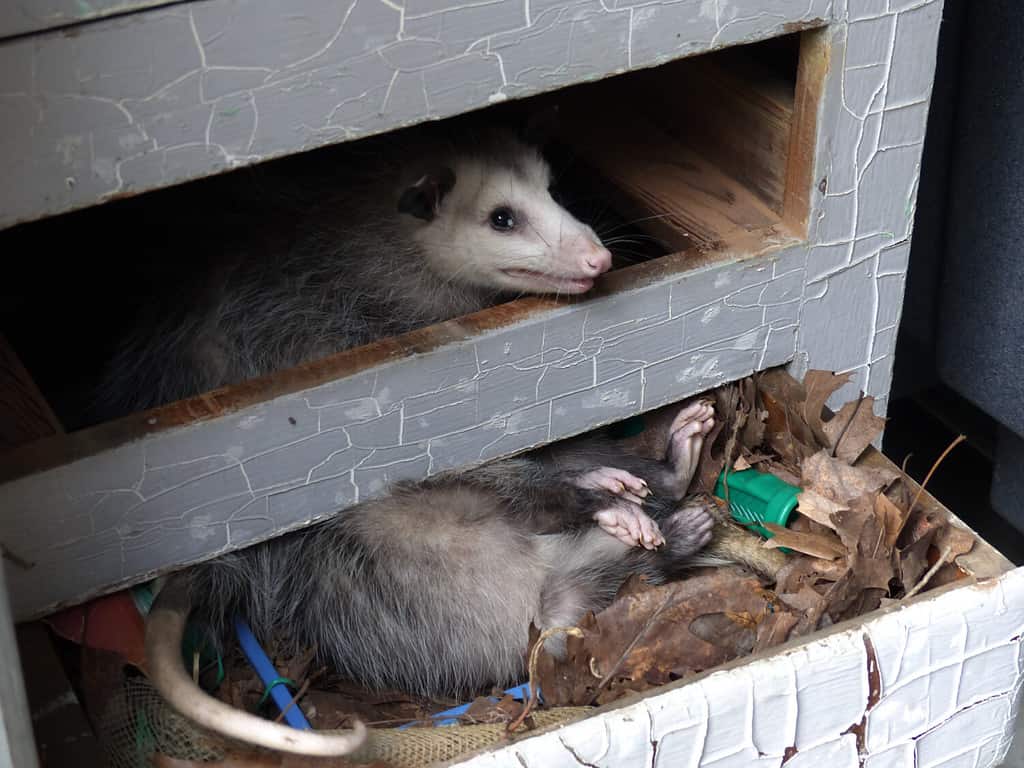
These nocturnal animals make a lot of noise when living inside a home.
©Lflorot/Shutterstock.com
Opossums are large animals and need rather large openings to find a way into an attic. Therefore, it’s a lot more rare to find an opossum nest in an attic, but it can happen. Like other animals, the females look for safe places to nest during the spring, and attics tend to be warm and dry.
Signs of opossums living in your attic:
- Most noises will occur at night.
- Scratching, gnawing, and scurrying sounds.
- Strong smells and large amounts of animal droppings.
7. Rats and Mice
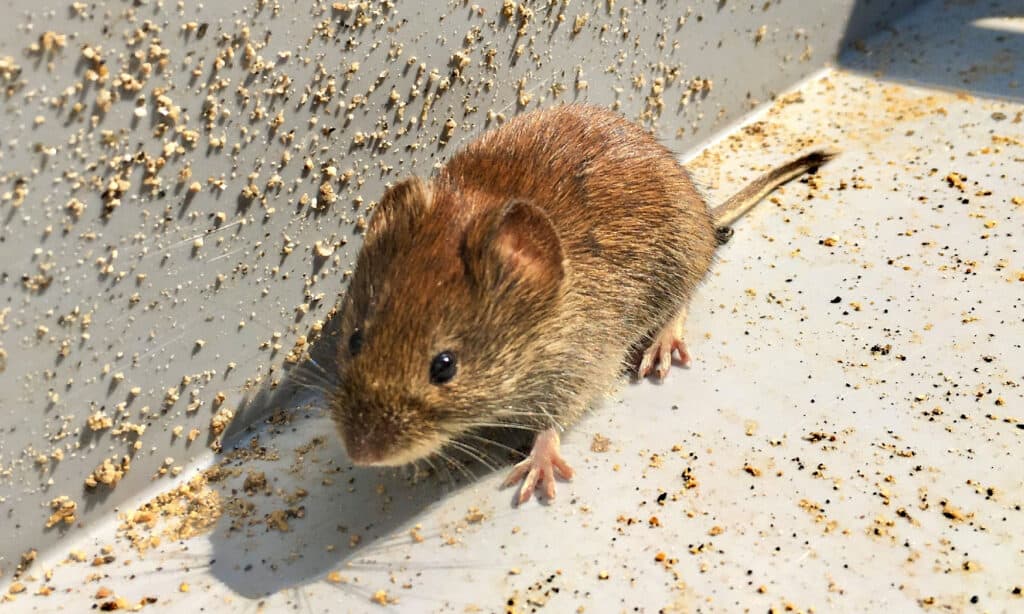
Rats and mice are after food and shelter. They can make their way through tiny openings into your home.
©iStock.com/Bruno_il_segretario
Rats and mice are animals that love to live in attics (as well as other parts of your home.) These rodents are very destructive and can chew through wires, insulation, pipes, and other parts of your home.
Signs of rats and mice living in your attic:
- Active at night.
- Skittering noises may be heard running across the ceiling.
- Scratching and gnawing sounds.
- The tell-tale sign of rodent droppings.
8. Stray Cats

A secluded attic may seem like the perfect shelter for a stray cat looking for a home.
©Katamount/Shutterstock.com
It isn’t just wild animals looking for a dry and warm space to take a rest, cats are also animals that occasionally live in attics. Stray cats may find a way into your attic. They are good climbers and may find openings through loose boards or siding.
Signs of cats living in your attic:
- More active at night.
- Scratching, scampering, and clawing sounds.
- Mewing and howling.
9. Bobcats

A family in Arizona was surprised to discover a mother bobcat had been living in their attic with her baby.
©Bildagentur Zoonar GmbH/Shutterstock.com
Admittedly, the last entry on our list is a rare find in a homeowner’s attic. However, it has been known to happen. A family in Arizona discovered a mother bobcat had been living in their attic with her baby. After safely trapping the baby, the family came home to discover the mama bobcat in their bathroom, likely looking for her little one. In a happy ending, the mother was also safely trapped, and the pair were reunited.
How to Get Rid of Wild Animals Living in Your Attic
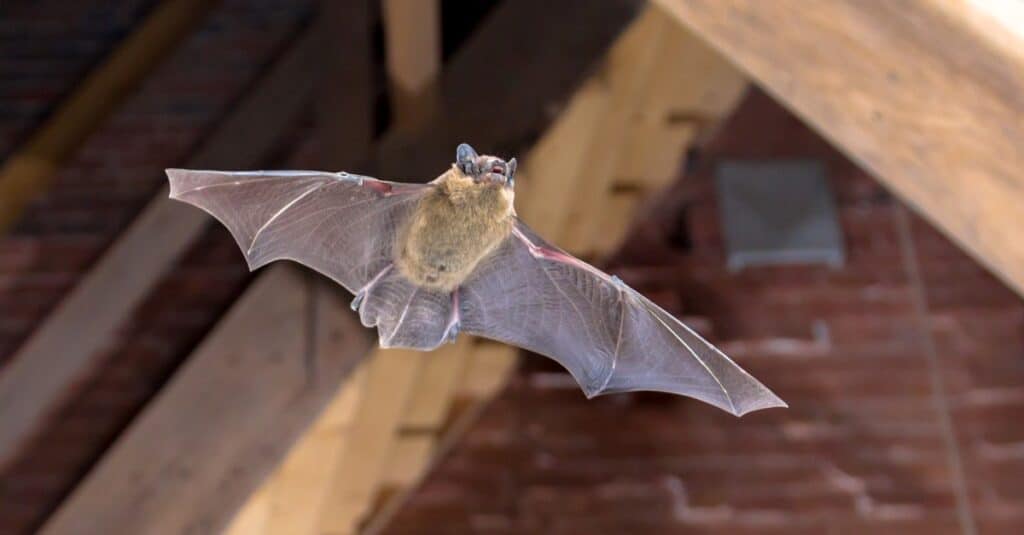
Once you’ve discovered wildlife in your attic, you need to take immediate action to remove it.
©Rudmer Zwerver/Shutterstock.com
Wildlife can pose big problems for homeowners when they make their way inside. From destructive chewing to droppings that carry disease and parasites, when you’ve got an infestation in your attic, it’s best to remove it as quickly, and safely, as possible.
In most instances, removing wildlife from your attic is best left to the experts. Wildlife control specialists can visually inspect your attic and come up with a plan to safely remove the critters. Once the animals are out you will need to repair the damage. Be sure to inspect your home for loose boards, holes, and other openings, and close any entry points to prevent other animals from making their way inside.
Thank you for reading! Have some feedback for us? Contact the AZ Animals editorial team.

